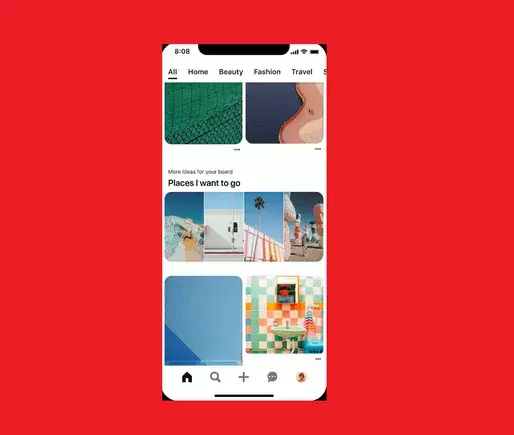Pinterest has long existed as a haven for creatives, a digital pinboard where ideas can thrive. But lately, the platform has taken a decisive leap into a more dynamic future with the introduction of innovative engagement modules. By reshuffling its approach to content discovery, Pinterest is not only responding to user needs but redefining the social media landscape. For users—those seeking inspiration for everything from DIY projects to fashion—these changes signify a new level of engagement that feels more immersive and meaningful. It’s a smart move from a platform that understands that in the realm of creativity, context is everything.
This shift carries implications far beyond just aesthetics. With the dual-module approach, Pinterest has effectively taken a bold step towards fostering deeper user interactions. Users can now dive into curated content through landing page modules that amplify engagement by guiding them through an enriched, visually stunning journey. This encourages not just browsing but a richer, more fulfilling exploration of ideas. In a world where digital interactions often feel shallow, Pinterest is defying the odds and proving that online experiences can be both engaging and deeply personal.
The Smart Mechanics Behind User Engagement
One of the most intriguing elements of these enhancements is the adaptive nature of the modules, which utilize sophisticated algorithms to hone in on user preferences. By analyzing interaction patterns—tracking what users click, save, or ignore—Pinterest can tailor content to suit individual tastes. This is a game-changer, not just for the platform’s overall user experience but also for brands attempting to penetrate the noise of digital marketing. Instead of presenting irrelevant content, Pinterest is curating an experience that acknowledges user agency—not an easy feat in today’s echo chamber of online feeds.
In addition, the innovative ‘skip slot’ mechanism elegantly maximizes user engagement without being intrusive. Earlier, these modules were stuck in fixed locations, often overshadowing other pins. The newfound dynamism of module placement enables Pinterest to display recommended content only when likely to captivate the user’s interest. This not only improves the visibility of organic posts but also staves off the dreaded user fatigue that often emerges in social media browsing.
A New Paradigm for Marketers
For marketers, Pinterest’s reinvention provides fresh and exciting opportunities, especially for those willing to embrace a more nuanced, data-driven content strategy. With these newly optimized modules, brands can gain precise insights into consumer behaviors, honing their messaging and visuals to captivate a more targeted audience. The personalized module features break the mold of one-size-fits-all marketing, allowing companies to harness the power of segmentation and engagement personalization.
This shift reflects a crucial trend that cannot be ignored: the increasing importance of consumer-centric designs in social media. Engaging with users on a more personal level always yields greater loyalty and brand affinity. By evolving its engagement strategy, Pinterest is not merely catering to fleeting trends; it’s paving the way for brands to foster longer-lasting relationships with users.
Marketers now have to adopt a forward-thinking mindset and treat user interactions as invaluable touch points rather than mere data points. By understanding how various module types resonate with different demographics, brands can craft compelling campaigns that fuel both engagement and conversion. This level of strategic thinking is essential if one hopes to stand out in an increasingly saturated digital environment.
The Future of Social Media is Personalized
As Pinterest continues to innovate, it’s pushing the boundaries of how we think about social media engagement and content discovery. The emphasis on personalization and user-centric designs is not just a fleeting trend but a foundational change in how platforms interact with their users.
For those of us who cherish creativity and value real connections, this evolution is a beacon of hope. Gone are the days of static, uninspired feeds. Instead, we’re stepping into a realm where interactions thrive on relevance, inspiration, and aesthetic beauty. The onus now lies on both users and marketers to embrace these changes and leverage them effectively in the evolving digital landscape. In doing so, we can foster a culture of creativity that not only inspires but also cultivates genuine connections across the vast tapestry of online experiences.









Leave a Reply